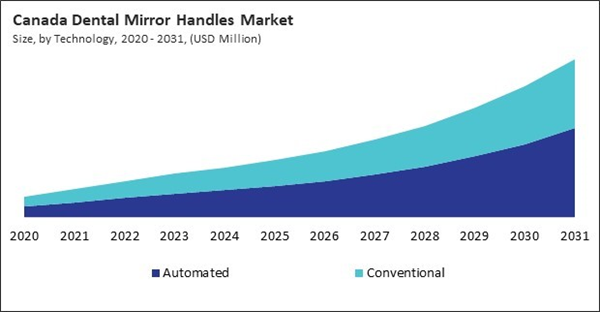The North America Demand Response Management System Market is expected to witness market growth of 15.6% CAGR during the forecast period (2024-2031).
The US market dominated the North America Demand Response Management System Market by Country in 2023, and is expected to continue to be a dominant market till 2031; thereby, achieving a market value of $6.87 billion by 2031. The Canada market is expected to witness a CAGR of 18% during 2024-2031. Additionally, the Mexico market would exhibit a CAGR of 17.1% during 2024-2031.
The demand response management system market focuses on technologies and services designed to optimize electricity consumption in response to supply conditions, particularly during peak demand periods. This market is essential to modern energy management strategies, helping utilities, businesses, and consumers manage energy use effectively while promoting sustainability.
Demand response management systems are utilized across various sectors to enhance energy efficiency and sustainability. Homeowners can participate in demand response programs, encouraging reduced energy consumption during peak times. Smart appliances, smart thermostats, and home energy management systems allow consumers to manage their energy usage effectively. For example, homeowners might receive notifications during high-demand periods to delay using energy-intensive appliances, such as dishwashers or washing machines.
the demand response management system market is experiencing significant development due to the growing acceptance of electric and hybrid vehicles in the US. As energy consumption patterns shift, managing and balancing electricity demand becomes critical, particularly with the expansion of electric vehicle (EV) usage. As per the U.S. Energy Information Administration, sales of electric and hybrid vehicles rose to 18.7% of total new light-duty vehicle (LDV) sales in the second quarter of 2024, up from 17.8% in the first quarter. This trend reflects an accelerating transition toward cleaner transportation options, and as a result, energy demand profiles across the country are evolving rapidly.
EVs act as energy storage units that can supply power back to the grid during high demand. DRMS solutions can effectively coordinate this energy exchange, creating a more resilient and responsive power grid. This configuration is consistent with the energy efficiency and renewable integration objectives of the United States, thereby benefiting both renewable energy sources, such as solar and wind, that depend on demand management for stability and reducing carbon emissions. Thus, rising electricity production and increasing sales of EVs in the region are driving the growth of the market.
The US market dominated the North America Demand Response Management System Market by Country in 2023, and is expected to continue to be a dominant market till 2031; thereby, achieving a market value of $6.87 billion by 2031. The Canada market is expected to witness a CAGR of 18% during 2024-2031. Additionally, the Mexico market would exhibit a CAGR of 17.1% during 2024-2031.
The demand response management system market focuses on technologies and services designed to optimize electricity consumption in response to supply conditions, particularly during peak demand periods. This market is essential to modern energy management strategies, helping utilities, businesses, and consumers manage energy use effectively while promoting sustainability.
Demand response management systems are utilized across various sectors to enhance energy efficiency and sustainability. Homeowners can participate in demand response programs, encouraging reduced energy consumption during peak times. Smart appliances, smart thermostats, and home energy management systems allow consumers to manage their energy usage effectively. For example, homeowners might receive notifications during high-demand periods to delay using energy-intensive appliances, such as dishwashers or washing machines.
the demand response management system market is experiencing significant development due to the growing acceptance of electric and hybrid vehicles in the US. As energy consumption patterns shift, managing and balancing electricity demand becomes critical, particularly with the expansion of electric vehicle (EV) usage. As per the U.S. Energy Information Administration, sales of electric and hybrid vehicles rose to 18.7% of total new light-duty vehicle (LDV) sales in the second quarter of 2024, up from 17.8% in the first quarter. This trend reflects an accelerating transition toward cleaner transportation options, and as a result, energy demand profiles across the country are evolving rapidly.
EVs act as energy storage units that can supply power back to the grid during high demand. DRMS solutions can effectively coordinate this energy exchange, creating a more resilient and responsive power grid. This configuration is consistent with the energy efficiency and renewable integration objectives of the United States, thereby benefiting both renewable energy sources, such as solar and wind, that depend on demand management for stability and reducing carbon emissions. Thus, rising electricity production and increasing sales of EVs in the region are driving the growth of the market.
List of Key Companies Profiled
- ABB Group
- Honeywell International, Inc.
- Schneider Electric SE
- Siemens AG
- Eaton Corporation plc
- General Electric Company
- Johnson Controls International PLC
- Trilliant Holdings, Inc.
- Alstom SA
- Enel S.p.A
Market Report Segmentation
By Technology
- Automated
- Conventional
By Application
- Industrial
- Residential
- Commercial
By Country
- US
- Canada
- Mexico
- Rest of North America
Table of Contents
Chapter 1. Market Scope & Methodology
Chapter 2. Market at a Glance
Chapter 3. Market Overview
Chapter 4. Competition Analysis - Global
Chapter 5. North America Demand Response Management System Market by Technology
Chapter 6. North America Demand Response Management System Market by Application
Chapter 7. North America Demand Response Management System Market by Country
Chapter 8. Company Profiles
Companies Mentioned
- ABB Group
- Honeywell International, Inc.
- Schneider Electric SE
- Siemens AG
- Eaton Corporation plc
- General Electric Company
- Johnson Controls International PLC
- Trilliant Holdings, Inc.
- Alstom SA
- Enel S.p.A
Methodology

LOADING...









